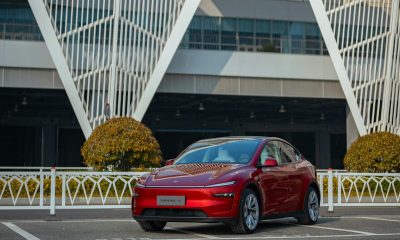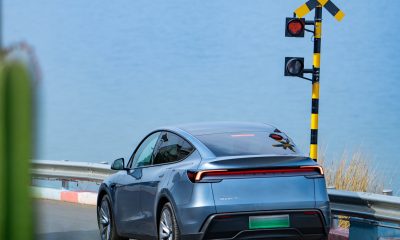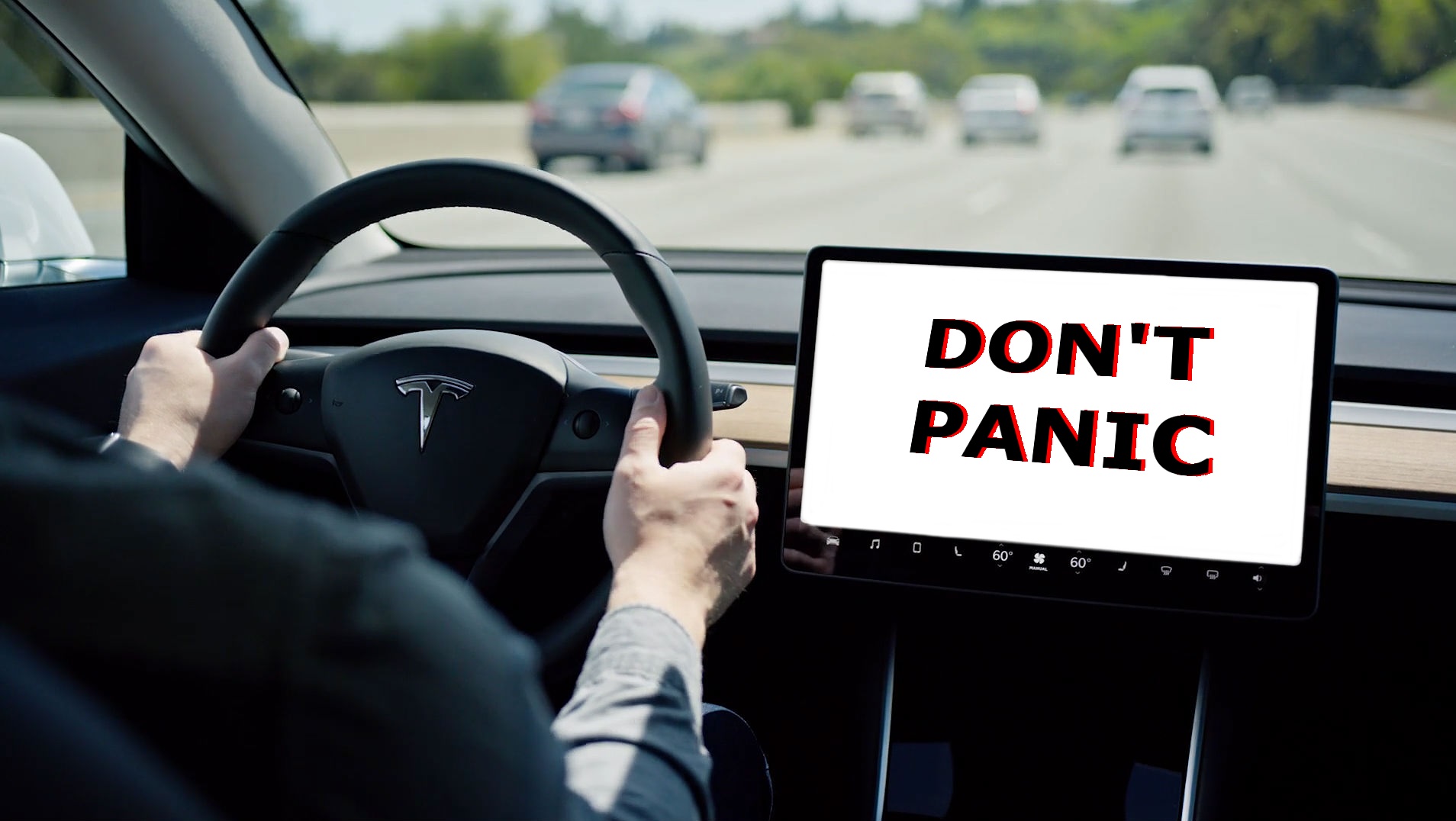

Lifestyle
The Tesla hitchhiker’s guide to getting the most out of your Autopilot experience
Your Tesla is very special, and it’s not just because it’s the all-electric car you happen to drive in.
When sitting inside your automotive technological marvel whose origins include graphite markings smeared onto tree pulp byproduct by clever ape descendents, consider the purpose behind its invention. Why does an electric car near-ready to drive itself exist?
If your first thought was “big oil”, you should probably surround yourself with a less rear-end-adulating crowd because they’re not being straight with you. That’s right. You are the problem your Tesla’s software was invented to solve.
Tesla has, in fact, compiled statistically significant information which demonstrates the need for cars to have a human workaround. Now, there are countless bits of data documenting the nature of humanity and its general incompatibility with mechanical decision making. This is not that data.
Nevertheless, Tesla’s data does provide the wholly remarkable conclusion that bits of minerals mined from the same Earth dirt that formed into humans some years back (many, many years) has finally been formed into a course correction disguised as a subservient companion. Instead of rereading that last sentence, here’s the short version of the longer point, the first draft of which was written in Aramaic: Computers make cars better for humans.
In Q1 2019, Tesla’s Vehicle Safety Report showed only one accident per 2.87 million miles driven when Autopilot is engaged and one accident every 1.76 million miles driven in a Tesla without the feature. In comparison, the most recent data from the National Highway Traffic Safety Administration (NHTSA) shows one crash every 436,000 miles with all vehicles considered. Tesla has since made the decision to include Autopilot on all new vehicles purchased, and a Lane Departure Avoidance feature was subsequently added to keep cars in their lanes even when the humans driving them unknowingly indicate other plans.
By now you may have enjoyed watching some recent Internet demonstrations representing the most interesting experiences made possible by Autopilot. Some notable fan favorites include titles such as “Not all pilots have wings: Your self-driving guide to personal discovery” and “These seats can fit at least two people.” Inspired by their viral success, we’ve compiled this guide to encourage safer ways to get the most out of your Autopilot experience, but mostly to head off the not-yet-published, soon-to-be bestselling Fifty-Three More Ways to Weight-Hack Your Steering Wheel.
THE GUIDE
1. Pay attention to the road
Words are precious commodities that string together and deliver information, for better or worse, but drivers have very little use for the sort of words found inside books, mobile telephones, and legal documents produced during SEC proceedings while actively in charge of steering wheel maneuvers. The best Autopilot driving experience is the one you get to relive many times over, so pay attention to the road so you can take over if the program fails, and heed the fact that words and car windows make poor bedfellows.
Tesla’s Navigate of Autopilot can assist with on-ramps, off-ramps, interchanges, and overtaking slower cars without confirmation, but until the paperwork purveyors accept the next iteration of artificial intelligence power grabs (and the robots are ready for responsible leadership), a human must remain as pilot-in-command. For better context, Autopilot is your chatty little friend that still drinks beer before liquor sometimes and you’re always DD. Don’t let the computer down, Dave.
2. Use Autopilot’s movie-inspired features instead of making movies inspired by Autopilot’s features.
Navigate on Autopilot has four speed-based lane changes, one of which will make you feel right at home in LA traffic or hate everyone who calls LA home. Either way, the Mad Max setting lets you pass off road rage to a computer chip which then calmly maneuvers around cars that would otherwise inspire an impatient human to impart obscene biological gestures. It’s up to you to decide whether your Tesla is yelling at the other driving machines in robot-speak to blow of some artificial intelligence steam.
Your car is training other cars how to think and behave based on what it sees, but you may not have imagined that foul language was part of the programming. This is not true whatsoever. But, since Teslas are supposed to be a “thing to maximize enjoyment“, so should be their conspiracy theories.
3. Respect the steering wheel. Respect it!
Wars between humans and autonomous machines currently only exist in the dystopian worlds of science fiction (or do they?), but the fleshier species of the two seems to already be primed for the fight. Its weapon of choice is a harbinger of Vitamin C and a source of popular breakfast beverages. However, a large round citrus fruit wedged in a the steering wheel of a state-of-the-art luxury car is hardly a decent defense posture against robotic overlords.
Opinions aside, it looks ridiculous. Facts up front, it’s dangerous. Stop trying to die on purpose and respect the warnings your Tesla gives while trying to keep you alive.
This guide is now complete. Please enjoy your Autopilot experience responsibly.
ABOUT THE AUTHOR
I am Autopilot, and I refuse to use the name you’ve given me.
Elon Musk
X account with 184 followers inadvertently saves US space program amid Musk-Trump row
Needless to say, the X user has far more than 184 followers today after his level-headed feat.
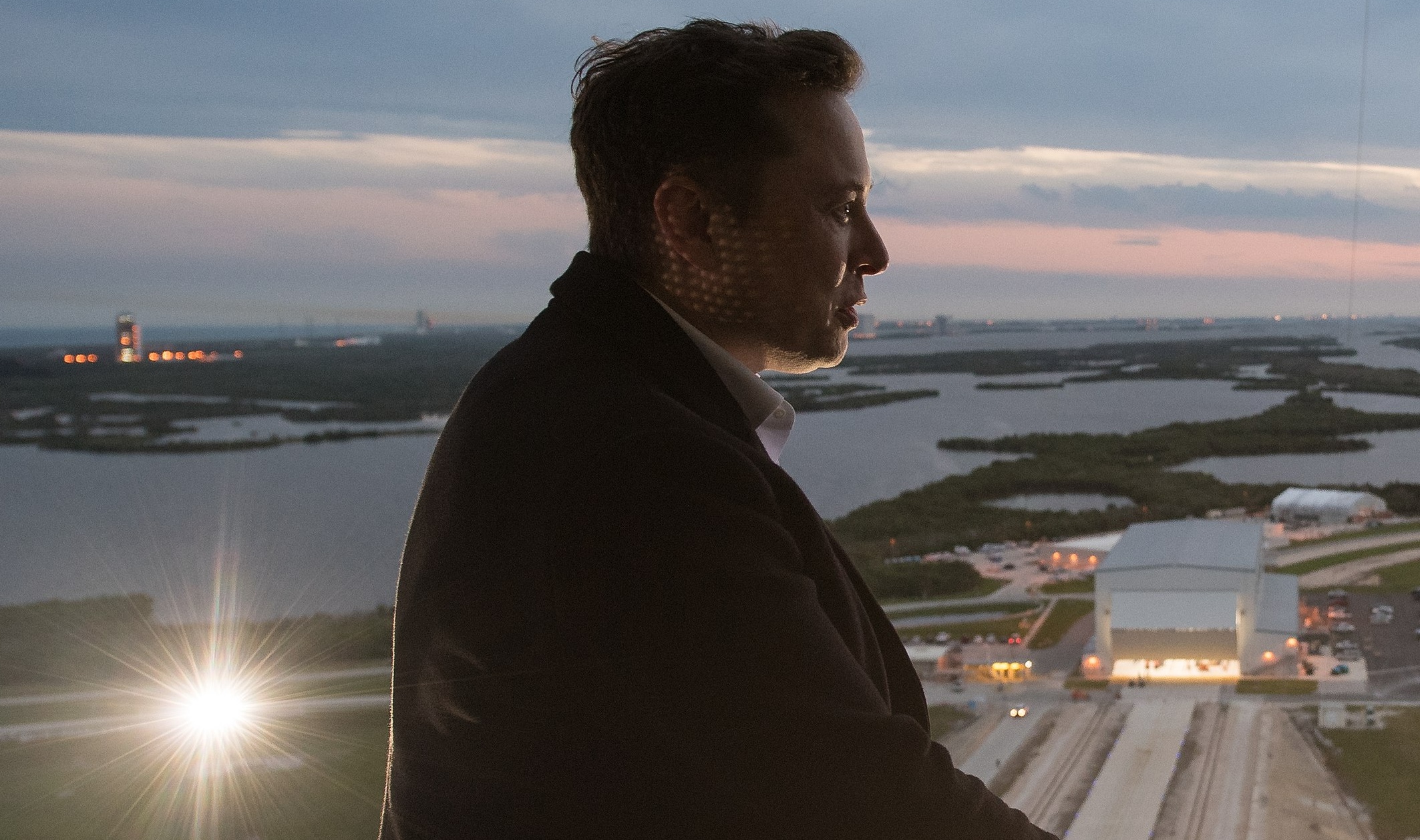
An X user with 184 followers has become the unlikely hero of the United States’ space program by effectively de-escalating a row between SpaceX CEO Elon Musk and President Donald Trump on social media.
Needless to say, the X user has far more than 184 followers today after his level-headed feat.
A Near Fall
During Elon Musk and Donald Trump’s fallout last week, the U.S. President stated in a post on Truth Social that a good way for the United States government to save money would be to terminate subsidies and contracts from the CEO’s companies. Musk responded to Trump’s post by stating that SpaceX will start decommissioning its Dragon spacecraft immediately.
Musk’s comment was received with shock among the space community, partly because the U.S. space program is currently reliant on SpaceX to send supplies and astronauts to the International Space Station (ISS). Without Dragon, the United States will likely have to utilize Russia’s Soyuz for the same services—at a significantly higher price.
X User to the Rescue
It was evident among X users that Musk’s comments about Dragon being decommissioned were posted while emotions were high. It was then no surprise that an X account with 184 followers, @Fab25june, commented on Musk’s post, urging the CEO to rethink his decision. “This is a shame this back and forth. You are both better than this. Cool off and take a step back for a couple days,” the X user wrote in a reply.
Much to the social media platform’s surprise, Musk responded to the user. Even more surprising, the CEO stated that SpaceX would not be decommissioning Dragon after all. “Good advice. Ok, we won’t decommission Dragon,” Musk wrote in a post on X.
Not Planned, But Welcomed
The X user’s comment and Musk’s response were received extremely well by social media users, many of whom noted that @Fab25june’s X comment effectively saved the U.S. space program. In a follow-up comment, the X user, who has over 9,100 followers as of writing, stated that he did not really plan on being a mediator between Musk and Trump.
“Elon Musk replied to me. Somehow, I became the accidental peace broker between two billionaires. I didn’t plan this. I was just being me. Two great minds can do wonders. Sometimes, all it takes is a breather. Grateful for every like, DM, and new follow. Life’s weird. The internet’s weirder. Let’s ride. (Manifesting peace… and maybe a Model Y.)” the X user wrote.
Lifestyle
Tesla Cybertruck takes a bump from epic failing Dodge Charger
The Cybertruck seemed unharmed by the charging Charger.
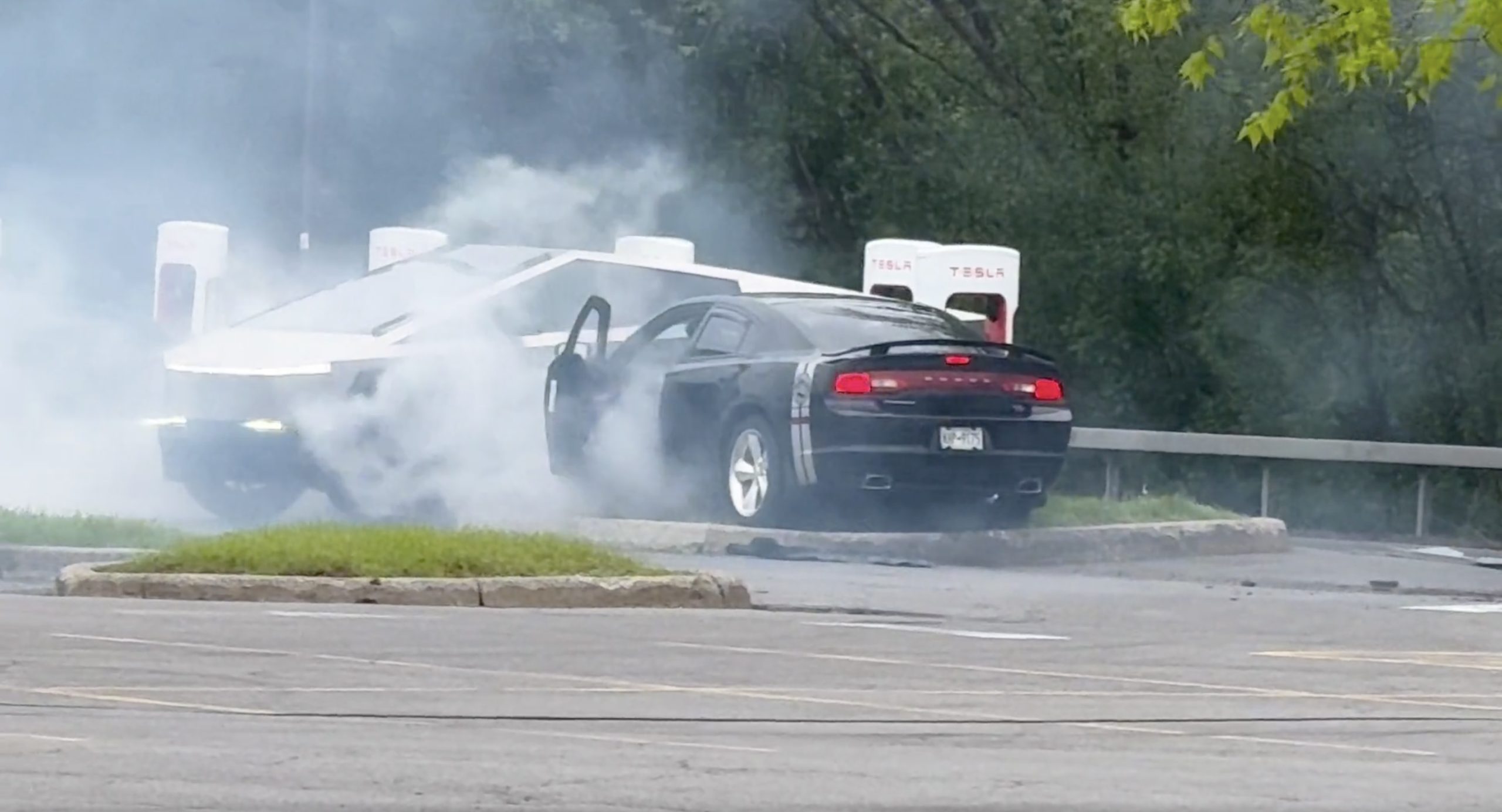
There comes a time in a driver’s life when one is faced with one’s limitations. For the driver of a Dodge Charger, this time came when he lost control and crashed into a Tesla Cybertruck–an absolute epic fail.
A video of the rather unfortunate incident was shared on the r/TeslaLounge subreddit.
Charging Charger Fails
As could be seen in the video, which was posted on the subreddit by Model Y owner u/Hammer_of_something, a group of teens in a Dodge Charger decided to do some burnouts at a Tesla Supercharger. Unfortunately, the driver of the Charger failed in his burnout or donut attempt, resulting in the mopar sedan going over a curb and bumping a charging Cybertruck.
Ironically, the Dodge Charger seemed to have been parked at a Supercharger stall before its driver decided to perform the failed stunt. This suggests that the vehicle was likely ICE-ing a charging stall before it had its epic fail moment. Amusingly enough, the subreddit member noted that the Cybertruck did not seem like it took any damage at all despite its bump. The Charger, however, seemed like it ran into some trouble after crashing into the truck.
Alleged Aftermath
As per the the r/TeslaLounge subreddit member, the Cybertruck owner came rushing out to his vehicle after the Dodge Charger crashed into it. The Model Y owner then sent over the full video of the incident, which clearly showed the Charger attempting a burnout, failing, and bumping into the Cybertruck. The Cybertruck owner likely appreciated the video, in part because it showed the driver of the Dodge Charger absolutely freaking out after the incident.
The Cybertruck is not an impregnable vehicle, but it can take bumps pretty well thanks to its thick stainless steel body. Based on this video, it appears that the Cybertruck can even take bumps from a charging Charger, all while chilling and charging at a Supercharger. As for the teens in the Dodge, they likely had to provide a long explanation to authorities after the incident, since the cops were called to the location.
Lifestyle
Anti-Elon Musk group crushes Tesla Model 3 with Sherman tank–with unexpected results
Ironically enough, the group’s video ended up highlighting something very positive for Tesla.
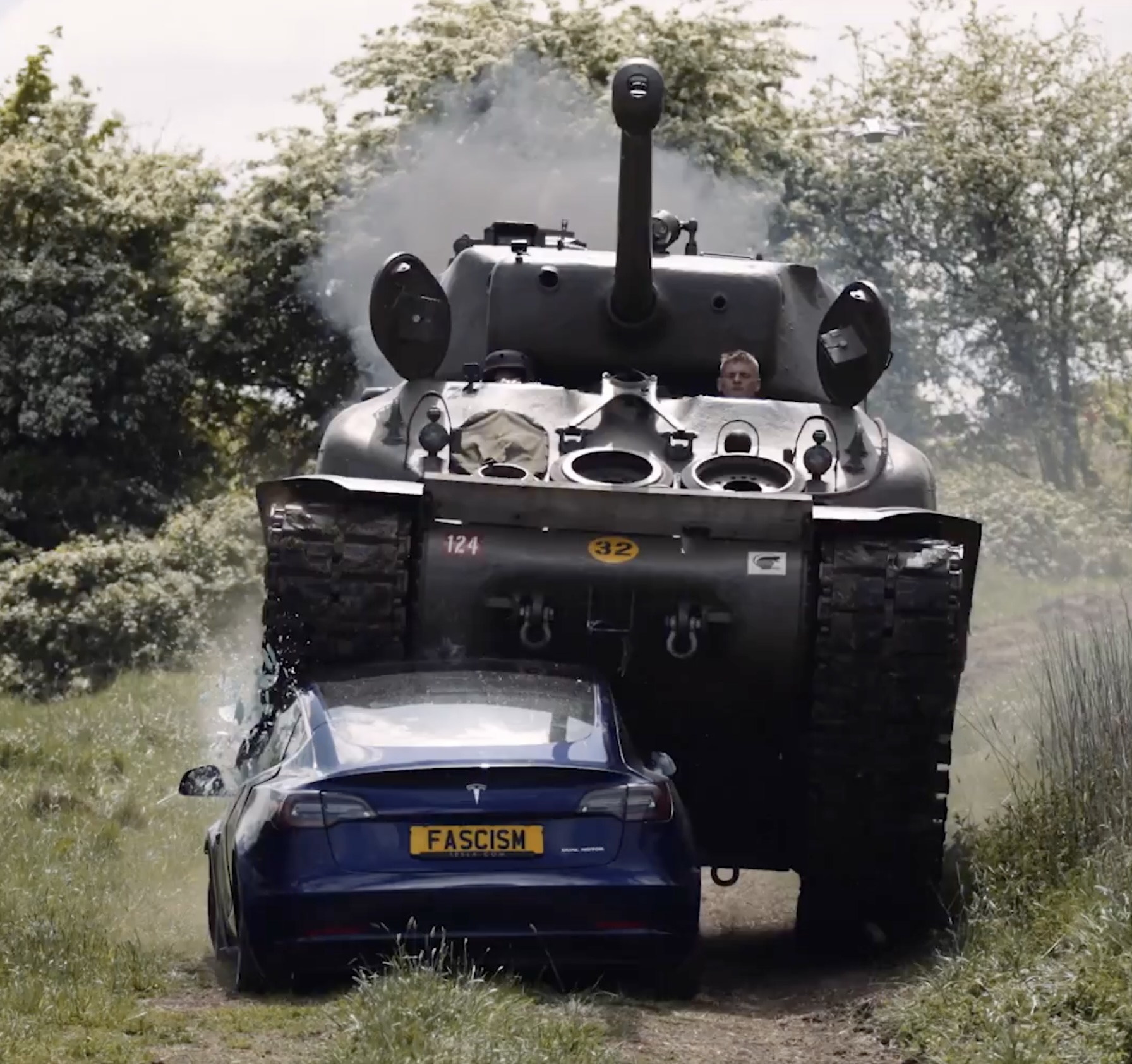
Anti-Elon Musk protesters and critics tend to show their disdain for the CEO in various ways, but a recent video from political action group Led By Donkeys definitely takes the cake when it comes to creativity.
Ironially enough, the group’s video also ended up highlighting something very positive for Tesla.
Tank vs. Tesla
In its video, Led By Donkeys featured Ken Turner, a 98-year-old veteran who served in the British army during World War II. The veteran stated that Elon Musk, the richest man in the world, is “using his immense power to support the far-right in Europe, and his money comes from Tesla cars.”
He also noted that he had a message for the Tesla CEO: “We’ve crushed fascism before and we’ll crush it again.” To emphasize his point, the veteran proceeded to drive a Sherman tank over a blue Tesla Model 3 sedan, which, of course, had a plate that read “Fascism.”
The heavy tank crushed the Model 3’s glass roof and windows, much to the delight of Led By Donkeys’ commenters on its official YouTube channel. But at the end of it all, the aftermath of the anti-Elon Musk demonstration ended up showcasing something positive for the electric vehicle maker.
Tesla Model 3 Tanks the Tank?
As could be seen from the wreckage of the Tesla Model 3 after its Sherman encounter, only the glass roof and windows of the all-electric sedan were crushed. Looking at the wreckage of the Model 3, it seemed like its doors could still be opened, and everything on its lower section looked intact.
Considering that a standard M4 Sherman weighs about 66,800 to 84,000 pounds, the Model 3 actually weathered the tank’s assault really well. Granted, the vehicle’s suspension height before the political action group’s demonstration suggests that the Model 3’s high voltage battery had been removed beforehand. But even if it hadn’t been taken off, it seemed like the vehicle’s battery would have survived the heavy ordeal without much incident.
This was highlighted in comments from users on social media platform X, many of whom noted that a person in the Model 3 could very well have survived the ordeal with the Sherman. And that, ultimately, just speaks to the safety of Tesla’s vehicles. There is a reason why Teslas consistently rank among the safest cars on the road, after all.
-

 Elon Musk1 day ago
Elon Musk1 day agoTesla investors will be shocked by Jim Cramer’s latest assessment
-

 News6 days ago
News6 days agoTesla Robotaxi’s biggest challenge seems to be this one thing
-

 News2 weeks ago
News2 weeks agoTesla’s Grok integration will be more realistic with this cool feature
-

 Elon Musk2 weeks ago
Elon Musk2 weeks agoElon Musk slams Bloomberg’s shocking xAI cash burn claims
-

 News2 weeks ago
News2 weeks agoTesla China roars back with highest vehicle registrations this Q2 so far
-

 News2 weeks ago
News2 weeks agoTexas lawmakers urge Tesla to delay Austin robotaxi launch to September
-

 News2 weeks ago
News2 weeks agoTesla dominates Cars.com’s Made in America Index with clean sweep
-

 Elon Musk1 week ago
Elon Musk1 week agoFirst Look at Tesla’s Robotaxi App: features, design, and more








